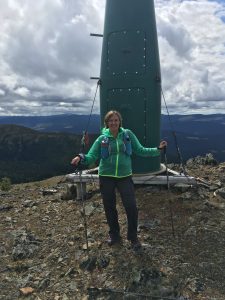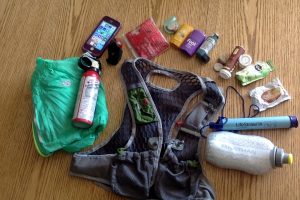As a “Double Feature,” I have chosen as my first link assignment submission to link to Sasha Passaglia and Jamie Ashton’s blogs on Lera Boroditsky’s video on How the Languages We Speak Shape the Way We Think.
Sasha’s task 2 link: https://blogs.ubc.ca/sashapassaglia/2020/05/22/task-2-does-language-shape-the-way-we-think/
My task 2 link: https://blogs.ubc.ca/rebeccahydamacka/2020/05/21/task-2-does-language-really-shape-the-way-we-think/
Jamie Ashton’s task 2 link: https://blogs.ubc.ca/jamiedimitra/2020/05/23/task-2-does-language-shape-the-way-we-think/
From my perspective, both task contrast each other. I was able to connect to Sasha’s task in understanding and content. Our experiences with the viewing of the video were very similar, while Jamie’s task felt like I was reading a foreign language at times although there was much common ground to be discovered.
First, I will describe my Link to Sasha’s task
Connections: Our perspectives are quite similar as is our viewing experience. This viewing experience is not one to ignore as it impacts our thinking and ability to connect in similar and yet slightly different ways. Our own children interrupted the viewing process as they attempted to interact with us, hers in person and mine via text messages. (If I do not respond, there are then subsequent phone calls.)
As I read Sasha’s blog, I felt validated in my blog comments as I could see many similar interpretations and thoughts. The first viewing gave an overall view but on the second viewing, more details were gleaned. We had both recognized our surprise and what I will call our own egocentric thinking about thinking and language. Other similarities included the opinion that the other module videos complimented Boroditsky’s video by adding a passion for languages other than text as well as an historical perspective. We both recognized the value of the past and the need to preserve languages but Sasha included a purpose: for future generations, as her perspective as a mother of youth children reminds her of this important need. Shared experiences of being teachers, mothers, nature lovers, and classmates in an earlier ETEC course could be a reason for our shared or similar understandings. Perhaps it is also a shared culture of ETEC graduate students.
Authoring: Sasha’s space is an easy to navigate and access WordPress blog. Items are clearly defined and accessible with a simple menu of 3 links at the top of her page. There are no additional permissions or passwords required with the comment section that easily accessible adding an element of co-authoring. The task is primarily text which is well organized and logical in its flow. A text based task such as this may privilege a more literate viewer; someone who is more of a visual learner may not find it as “approachable.” However, a quote from another source is included with its formatting (offset or indented and in a different italicized font) adds another texture to her post making it more appealing in addition to highlighting a key understanding for her.
My own site’s authoring is similar to Sasha’s. It is a WordPress blog with a simple “menu” at the top which is really just my 3 categories, an About page and a Home page. My home page contains all of my posts and seems maybe redundant but for now it stays. There will be opportunity to change it later (I am afraid to do so now for fear of losing items). I am new to WordPress, and thus used a simple blog comment about the experience with no additional photos or attachments. I have chosen to reflect on the experience as well as the content linking it to the other “readings” with a simple blog comment. This simplicity may be due the assignment itself as there was no requirement to post; this may also be considered a design restraint. While that may be all that is needed, I later returned to attempt to insert a link to Borditsky’s video which did not have the visual appeal, I had wanted. I think I have since discovered how to include visuals such as videos now though.
Pedagogical underpinnings of the course design are evident in specifically in Task 2’s the requirement of annotations, or learning a new system of communication in an asynchronous manner. It is almost like being in a class discussion but this immersive experience felt disjointed not being in real time with the luxury of asking for clarification. This disruption of thinking echoes one of the portions of Boroditsky’s examples of how interrupting thought patterns can change the way an individual recalls events. Clever of the task for a truly immersive experience but was it intended?
My own 8/9 classes are in the early states of working with annotations and this technology making this an interesting experience. A DIY or do it yourself is highly recommended before attempting new experiences with students. The synthesizing of information from multiple sources is another pedagogical underpinning which both Sasha and myself did as we noticed how the tap dancer and Shetlandic poet complimented and even advanced the lecture by Boroditsky.
Yet, another underpinning of the course design may be in the process in which new knowledge builds upon old. Being new to WordPress, my blog design had been modelled as much as possible like a Weebly built in another ETEC with a top menu. In uncertain times, there is comfort in familiarity and from this one might develop the confidence to branch out and attempt new formats. This is much the same for my own students. I can see and appreciate a process of attaching to previous knowledge before adding new.
Unfortunately, due to the RSS feed requirements my pages needed to be changed to posts. This was done with categories and a menu created from those categories. An excellent tutor on Google meet screen shared and walked me through the difference between pages and post and how to set up categories to appear in a menu; many thanks Ernesto! I am reminded of the need to start out at an appropriate level with some or enough support so that a task can be done independently. In addition to having instructor support, there was also the peer support. By having the ability to share comments in the CLAS annotations in addition to viewing tasks in other students blogs will help to define and refine skills. Further, the need to change and discover how to use the WordPress tool took some time and “tinkering.” As more tools and skills become familiar, these will be added to the repertoire. Time to explore in the early stages of ETEC 540 and develop this familiarity works. It may organization of that time that will be a challenge.
And now for my Link to Jamie Ashton’s Task 2:
https://blogs.ubc.ca/jamiedimitra/2020/05/23/task-2-does-language-shape-the-way-we-think/
Connections and disconnections: I have chosen to also link to Jamie’s task because it is so different from my own and also outside my own experience and paradigm of language. I cannot imagine speaking 6 different languages ever! For someone who struggled with French until grade 12, but still remained essentially unilingual, Jamie’s multilingual background amazes me. It also affords her a much deeper understanding of language reminding me that we all come from different experiences and places. The value or importance of a second or third language or the need to be bilingual varies sometimes due to cultural or geographical location. One thing that I could not connect to were, Jamie’s “very crazy looking syntax trees” which overwhelmed me initially, and still does. I am in awe of her understanding.
I did, however, the use of augmentative technology for language as I worked as an intervenor for several students who used this technology. The world of those with deaf-blind live in a tactile language world. It is really difficult to understand until you have had a chance to be with another culture. My experience is not nearly as broad but I was able to make a few tentative connections to Jamie’s ESL experience and differences in culture and language.
I also connected with the annotation quoting Boroditsky: “combining a finite set of words into an infinite set of new meanings” which I, as had Jamie, found debatable as we do add new words as language evolves. But there is definitely an ability to build infinite meanings with different combinations; and even different ways to combine media to explain this concept. Jamie’s addition of the John Green’s book title video shows this well.
At one point in the annotations Jamie notes it is “probable to consider that language developed in relationship to things that needed to be given attention in any given society” (7:54) which while I agreed with this statement, it also lead me to think about where and why our task diverged in content and thought. This may primarily be due to our own experiences and the worlds we are immersed in: Jamie in linguistics and I in a world of History. A theme of past, present and future emerging for me. What resonated with me was who language and culture was shaped from our past histories and generations and the need to preserve dialects and appreciate their value. I even felt a passionate about this, similar to Sasha and found it initially odd to not “feel’ this in Jamie’s blog as for me this was the essence of the module.
Authoring: Jamie’s website is clean, easy to navigate with a wide variety of well placed visual elements. And then I recognized the theme, Anders Norén, which allows one to easily see tasks much like file folders or sticky notes. Incidentally, I selected this same theme for another course blog after an agonizing couple of hours. I believe the theme sspeaks yet another language as it communicates through its layout whether it is a serious “news” type blog or perhaps a modern avant garde blog. Jamie’s blog header image fits well with the theme of How the Languages We Speak Shape the Way We Think. I was also impressed with the addition of her annotation log along with Boroditsky’s video, as well as the links to additional videos and other information. I am in awe of the many literacies that Jamie possesses. which also privileges a a wider range of literacies by include not simply text, and images but also audio-visual content.
My own blog was short and simply text as I had yet to discover how to add other elements but the essence of meaning is still there . – language is constructed through culture and is linked to the past despite evolving into the future. Later in comments, Jamie helped to clarify these final thoughts as even I too, am evolving in my understanding, thinking and literacies.
And yes, I have discovered how to add video!

